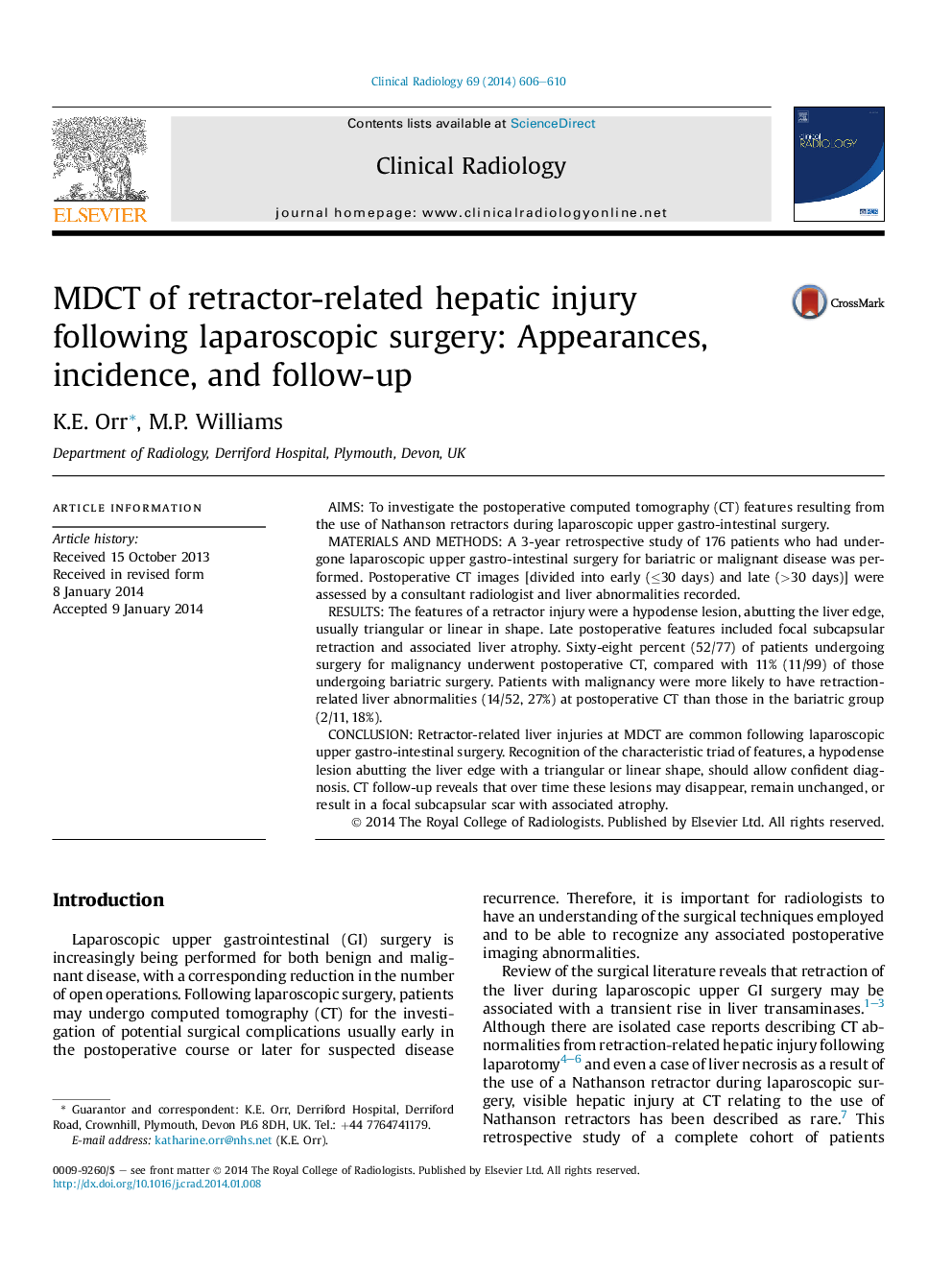| Article ID | Journal | Published Year | Pages | File Type |
|---|---|---|---|---|
| 3981742 | Clinical Radiology | 2014 | 5 Pages |
•Large numbers of patients undergo post-op CT after upper GI laparoscopic surgery.•Retractor injuries are common in the 30 days after laparoscopic upper GI surgery.•Characteristic features are hypodense, triangular/linear lesions at the liver edge.
AimsTo investigate the postoperative computed tomography (CT) features resulting from the use of Nathanson retractors during laparoscopic upper gastro-intestinal surgery.Materials and methodsA 3-year retrospective study of 176 patients who had undergone laparoscopic upper gastro-intestinal surgery for bariatric or malignant disease was performed. Postoperative CT images [divided into early (≤30 days) and late (>30 days)] were assessed by a consultant radiologist and liver abnormalities recorded.ResultsThe features of a retractor injury were a hypodense lesion, abutting the liver edge, usually triangular or linear in shape. Late postoperative features included focal subcapsular retraction and associated liver atrophy. Sixty-eight percent (52/77) of patients undergoing surgery for malignancy underwent postoperative CT, compared with 11% (11/99) of those undergoing bariatric surgery. Patients with malignancy were more likely to have retraction-related liver abnormalities (14/52, 27%) at postoperative CT than those in the bariatric group (2/11, 18%).ConclusionRetractor-related liver injuries at MDCT are common following laparoscopic upper gastro-intestinal surgery. Recognition of the characteristic triad of features, a hypodense lesion abutting the liver edge with a triangular or linear shape, should allow confident diagnosis. CT follow-up reveals that over time these lesions may disappear, remain unchanged, or result in a focal subcapsular scar with associated atrophy.
